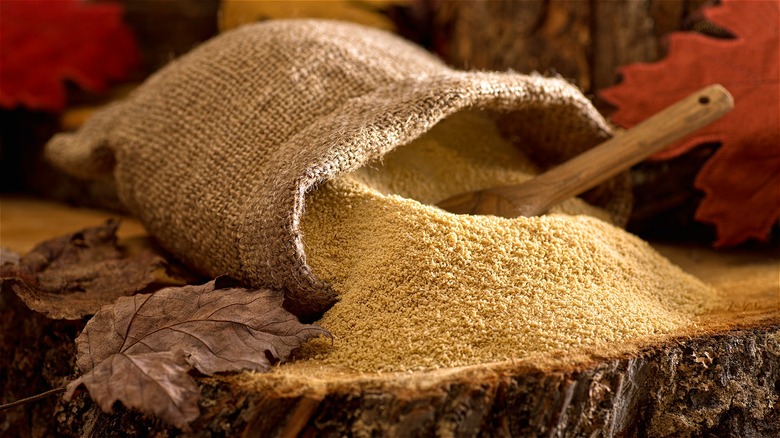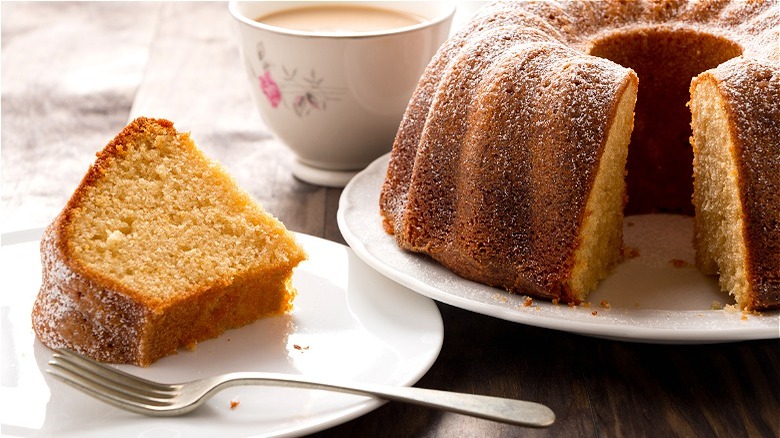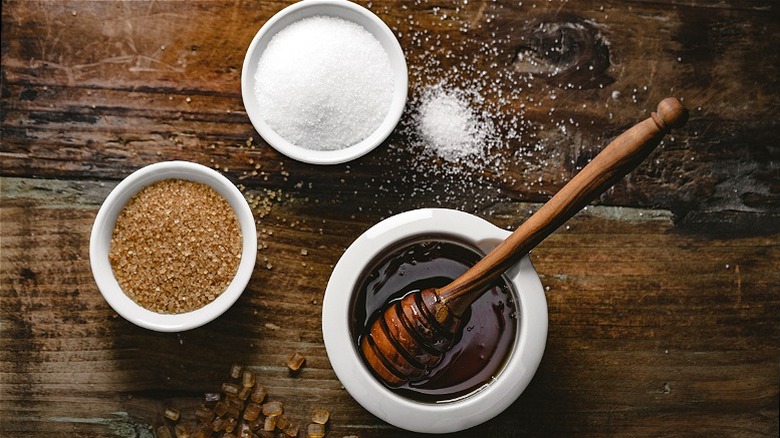What Is Maple Sugar, And What Can You Do With It?
We may receive a commission on purchases made from links.
No one can deny the delicious qualities of pure-grade maple syrup. Unlike the cheap plastic containers of cheap knockoff sweeteners found in most grocery stores, pure maple syrup is made from the naturally occurring sap of sugar maple trees and boiled into a natural, concentrated golden sweetener. While the intricate art of making maple syrup is a multi-step process of collecting and boiling sap, alternatively, maple sugar is made by simply removing the moisture from maple syrup. But what is maple sugar, exactly?
In most cases, maple sugar serves as a comparable dry sugar alternative. Pure maple syrup is cooked down to remove any liquid, resulting in a granulated mixture of concentrated maple sap. You can even make maple sugar at home by controlling the boiling temperature of any standard maple syrup. Simply bring a few cups of maple syrup to a boiling point of 260 degrees Fahrenheit and stir the mixture continuously until maple sugar granules remain.
Now that you know what maple sugar is, what does it taste like, and more specifically, how can you use this natural granulated sweetener to enhance your day-to-day eats?
Use maple sugar to enhance your favorite foods
If you're already privy to the ways you wouldn't have thought to use maple syrup but don't always have room in your refrigerator to store your favorite liquid sweetener, maple sugar is a convenient, shelf-stable alternative and a great way to give your favorite foods a hint of maple sweetness in dry form.
If you're intimidated about maple sugar, think of this natural sweetener as a cane sugar substitute and go from there. Maple sugar mirrors the consistency of brown sugar and has an extra-sweet maple flavor. Believe it or not, there are so many creative ways to use maple sugar to brighten the standard flavors of your most commonly consumed foods.
Substitute maple sugar for regular sugar in coffee or tea and use this natural sweetener as a much-welcomed substitute for honey in your morning bowl of yogurt. You can even use maple sugar to sweeten your favorite cakes and cookies. If you want more maple-specific recipes, try making homemade maple whipped cream by whipping together heavy whipping cream and maple sugar. You can also try sweet and savory snacks, such as spiced maple popcorn, which contains maple sugar and warming spices such as turmeric, chili, and garlic powder. All in all, you can use maple sugar in just about any recipe that calls for regular cane sugar, as long as you stay mindful of the differences between maple sugar and other sugar alternatives.
How does maple sugar compare to white cane sugar?
Before you consider replacing cane sugar with maple sugar in your favorite apple cinnamon walnut muffin recipe, you might be curious to know the exact differences between regular white sugar and maple sugar. Beyond the fact that maple sugar has an obvious maple flavor, you may want to use less maple sugar than you would cane sugar if this is your first time using this natural sweetener.
As a good rule of thumb, instead of replacing an entire cup of cane sugar with an entire cup of maple sugar in your next round of baked goods, try substituting part of the recommended sugar with maple sugar to see if you're pleased with the results. Portioning out maple sugar in this way not only warms your palate to the distinct maple flavor, but you'll be saving money as well. Maple sugar is quite pricey when purchased online or in stores. 12 ounces of maple sugar costs nearly $15 on Amazon.
However, if your budget can stand it, maple sugar is a delicious alternative to regular sugar. This natural sweetener is less processed and contains a healthy dose of nutrients in every tablespoon, such as manganese, which help your body build stronger bones. Besides the logistics, maple sugar is a natural dry sweetener that has the ability to impart a delicious maple flavor to many of your favorite foods.


